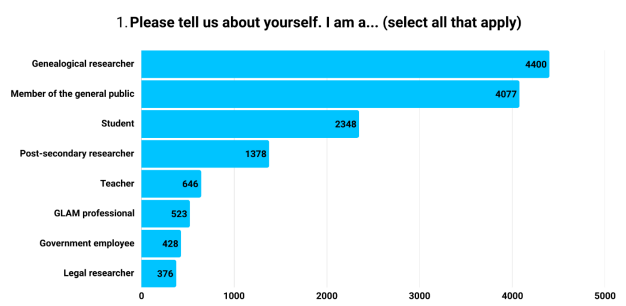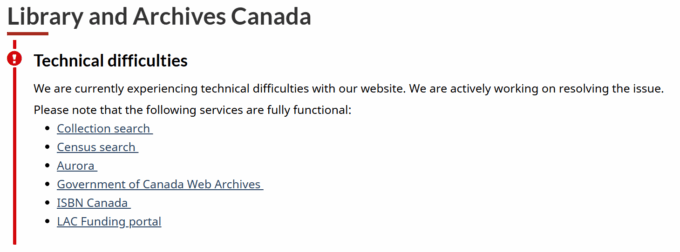Miscellaneous items I found of interest during the week.
New search button for the BIFHSGO website
I’ve been pestering BIFHSGO, and its long-suffering webmaster, for a simple way to search the Society website, especially the contents of back issues of Anglo-Celtic Roots. Harrah! It just appeared.
Go to the top left-hand corner of every page to find the search button “ENHANCED BY Google.” Type in the term you want to search and click on “Enter.”
Look for more changes coming to the website.
Counting the climate costs of abandoned shopping trolleys
Three Times As Good!
Unusually, on three successive days, 21-23 July, Dick Eastman posted about the Genealogy Fair in Fergus, Ontario . It’s on Saturday, 6 Sept from 9 a.m. to 4 p.m. Do I detect AI at work?
Bradford Trade Directories 1861 -1901
Hockey’s Violence Problem – And Ours
The article Hockey Canada sex assault verdict: Sports culture should have also been on trial is food for thought.
The acquittal of five former Hockey Canada players has reignited debates about sports culture and sexual assault. While victims deserve our support regardless of a trial’s outcome, the conversation raises uncomfortable questions about hockey’s unique relationship with violence and how society processes men’s issues only when they intersect with women’s safety.
As an immigrant from Britain, where football and cricket predominate, along with tennis and bowls, none of them contact sports, I’ve always found the violence in (ice) hockey disturbing. Unlike boxing or MMA, where violence is contained within formal combat rules, hockey players learn that hitting opponents, fighting, and intimidation are strategic necessities. From minor hockey onward, controlled aggression against those who threaten your team becomes a core skill.
Compare this to basketball, soccer, tennis, or even American football which has established rules governing contact. While American football involves physical contact, it doesn’t condone the interpersonal feuds and targeted aggression that hockey often celebrates. The physical dominance that wins hockey games doesn’t magically switch off in hotel rooms, suggesting the problem may be more fundamental than policy reforms can address.
The original article notes that male athletes are “socialized to comply with peer cultures that equate vulnerability with weakness”, that’s the same conditioning that produces hockey’s alarming rates of depression, anxiety, and suicide. Yet we only examine this socialization when men become perpetrators, not when they become victims.
Systems that dehumanize people rarely limit their damage to one group. The culture that treats women as objects may also destroy the mental health of men within it. Meanwhile, men also face forms of prejudice, from assumptions about their inherent violence and untrustworthiness around children, to dismissal of their experiences as domestic violence victims or sexual assault survivors.
Selective empathy and gendered prejudice serve no one well.
100 piece Bath Jigsaw Puzzle
Thanks to the following for comments and tips: Ann Burns, Anonymous, Brenda Turner, Christine Jackson, Ken McKinlay, Sheila Dohoo Faure, Teresa, Unknown
 This updated dataset, of 6,883 records, documents removals of impoverished individuals from English and Welsh Poor Law Unions to Irish destinations between 1857 and 1879. The entries vary in completeness. In some cases, only basic personal information is recorded, for example:
This updated dataset, of 6,883 records, documents removals of impoverished individuals from English and Welsh Poor Law Unions to Irish destinations between 1857 and 1879. The entries vary in completeness. In some cases, only basic personal information is recorded, for example:


 The valuable records in these nine collections cover 500 years from the 14th century to the 19th century.
The valuable records in these nine collections cover 500 years from the 14th century to the 19th century.

 The FreeBMD Database was updated on Wednesday, 23 July 2025, to contain 293,630,377 unique records, up from 293,415,571 at the previous update.
The FreeBMD Database was updated on Wednesday, 23 July 2025, to contain 293,630,377 unique records, up from 293,415,571 at the previous update.